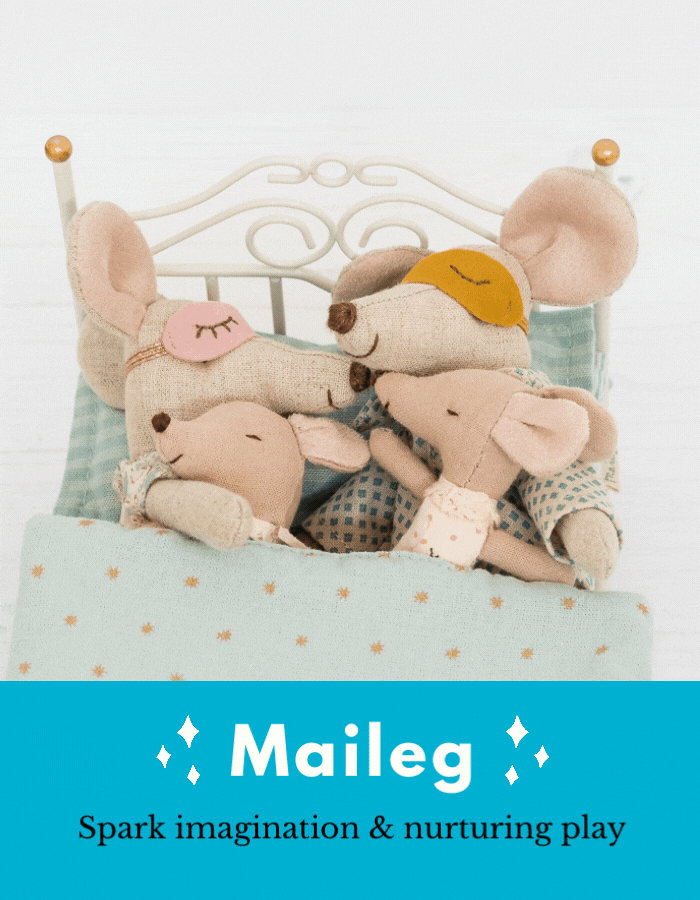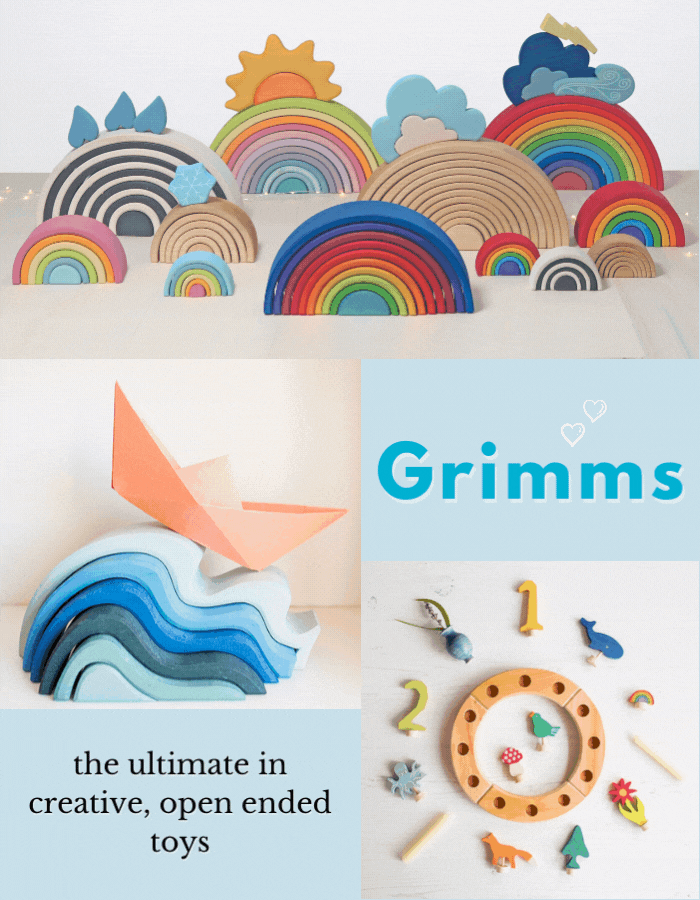Alphabet blocks may be the most quintessential educational toy imaginable. These blocks have been connecting play and learning for over 300 years! That's a seriously successful toy history. ABC blocks are so impressive, they've been inducted into the Toy Hall of Fame (yes, there is such a thing).
Our favourite ABC blocks are the beautifully made sets from Uncle Goose. In the 10+ years we’ve had our toy store, these gorgeous blocks in many languages have had a cozy spot in our top ten best selling toys. Customers love them! They buy them for themselves, for gifts, for decor - you name it! So what's so great about them and what can you do with them once you've got them home?
Here's why ABC blocks should be in your kids toy box:
- They introduce early literacy. ABC blocks are awesome for making learning the ABC's fun and playful.
- They have a lengthy play timeline. Young toddlers can explore the textures, practice stacking and begin letter recognition. Pre schoolers can practice sorting and honing their alphabet knowledge. School aged kiddos can use the blocks to spell simple words. That's a lot of years of use for one simple toy!
- ABC blocks introduce early math and science concepts such as counting and balance and cause and effect. How many blocks high is this tower? How can I balance one block on top of the other?
- They're an excellent toy to enhance logical and critical thinking. Why did my tower fall? Hmm, if I put the block too close to the edge of the other block it falls over. How could I make it more stable? Read more about the importance of Critical Thinking here.
- Improves fine motor skills (using the small muscles in the hands, fingers and wrists), hand eye coordination and spatial awareness.
- They build vocabulary. Most ABC blocks have common animals on one side, and kids absolutely love to learn the names of animals.

So how can you use alphabet blocks to have fun and help your child learn new concepts? Here are our favourite play ideas for alphabet blocks.
10 ABC Block Play ideas
1. Stack towers.
For toddlers, simply practicing stacking one block on top of the other is a great challenge. Over time, they will hone their balancing skills and begin building bigger and bigger towers (and gleefully knock them over).

2. Get physical.
Use the blocks to get your little one running around the room. Place 5 or 6 blocks around the room (more if your kiddo is comfortable with the alphabet). Ask your kid to "run and touch the letter A. Great! Now where's the B? Run and touch it!" This is a great way practice letter recognition and get your kid moving (perhaps while you sip a much needed coffee on the couch?).
3. Practice sequencing.
Once your child knows the alphabet, have them put the blocks in the right order to create the whole alphabet. Putting things in order, or sequencing, is excellent brain exercise and kids love the satisfaction of making a giant letter snake!
4. Spell simple words.
Write out some 3 or 4 letter words (like PIG, CAT, DOG, MAMA etc) on a piece of paper and have your little one recreate the word with their blocks. Honestly this simple activity gave me a lot of much needed down time while my son busily completed the list of words I gave him. Life. Saver.

5. Stamp out words.
Kids love playdough and they love stamping things, so this is a perfect combo. Roll out some dough, write out some words on paper and have your kiddo practice stamping the words into the dough. Fun and simple!
6. Introduce early math concepts like measuring.
How many blocks high is this tower? How many blocks long is this book, stuffed animal or car? Which is the shortest? Tallest? Longest?
7. Match animals or other toys to the letter.
Choose some toy animals (or play food or any everyday objects you have laying about). Put the letter blocks in different places around the room and have your child match the toy to the right letter. Piggie goes beside the "P", that toy carrot goes beside the "C" and the book goes with the "B". The blocks pictured here are from Uncle Goose.

8. Set the table
Even small kids can set out letter blocks to mark each family members spot at the dinner table (M for mama's spot, A for Ava's). Older kiddos can spell out whole names and "mom" and "dad". Giving kids a task to complete can make them feel more confident and part of the action.
9. Changing letter display.
Choose a letter block and put on a special spot on a shelf. Collect objects (get your kid to help!) that match that letter. For example "A" could have a toy apple, a found acorn and a picture your child draws of an anchor. Change up the display whenever you fancy to a new letter with new matches.
10. Scavenger hunt.
Choose a letter block and ask your kiddo to roam around your home looking for objects that match that letter. See what they come up with!


